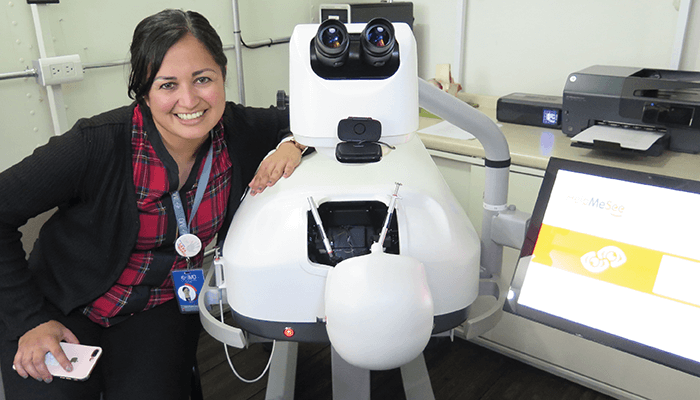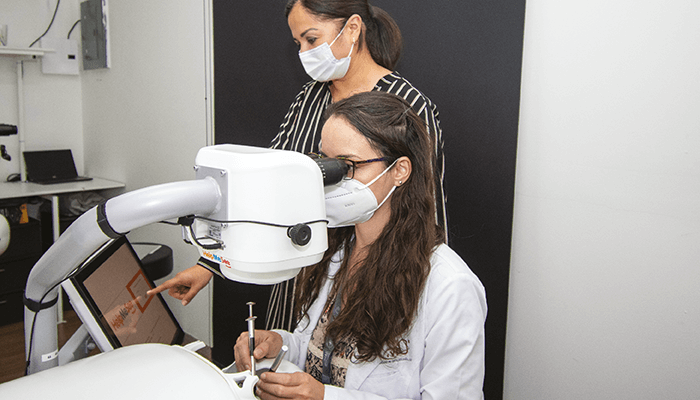
In 2019, Pamela Gonzalez began to incorporate the HelpMeSee Eye Surgery Simulator into her Manual Small Incision Cataract Surgery (MSICS) classes. Three years later, Gonzalez is the lead instructor for HelpMeSee simulation-based training at the Mexican Institute of Ophthalmology (IMO). In part three of our series, Gonzalez shares her story and discusses the future of the field.
How did you become involved in the HelpMeSee project?
After training as an anterior segment surgeon, I worked in a hospital that began to use MSICS – but we didn’t have the help of a simulator (we didn’t know they existed back then). Because it was clear that MSICS was safe and effective, we sought out skilled surgeons in Guatemala to teach us how to perform it. It took six months for us to be ready to practice and teach the technique to fellow residents and ophthalmologists. Five years ago, I was introduced to the HelpMeSee project and its virtual reality simulation-based training – and that’s when we began to explore the possibility of becoming academic partners. What I really like about the HelpMeSee project is that it is not only a simulator, but also an academic endeavor to help practicing surgeons master the technique.
Why is MSICS important?
The most common procedure for cataract surgery in the developed world is phacoemulsification; however, your geographic location, the case you have in front of you, and the resources available to you are all important factors in choosing the right procedure. Most residency programs train residents in phacoemulsification, but not all offer training in a manual technique. I’d say it’s essential to be trained in a manual technique because, when you have complications in a phaco surgery, you need manual techniques to solve them.
With whom do you work at IMO?
IMO is a nonprofit organization and a teaching hospital with a strong cataract department. There are five cataract surgeons, including me, who are involved in all anterior segment procedures. Every day, we perform not only clinical duties, but also teaching activities. Because IMO is a regional training center, we don’t just train our own residents or fellows; we also teach residents and fellows from across Latin America who may lack access to training facilities. We want to train them here so that they can take those skills back to their own countries and pass them on to others.
We now have IMO graduates practicing in Honduras, Peru, Laos, Costa Rica, Nicaragua, Bolivia, Argentina, and Colombia. These doctors didn’t just come to IMO for the HelpMeSee simulator; they completed full fellowships – some even stayed for their entire residency programs. It’s great that they are now teaching other ophthalmologists in their home countries MSICS techniques, because this will help MSICS expand into new regions.
What lies ahead for HelpMeSee?
The future is promising for the HelpMeSee simulation-based training program. Right now, we are only involved in MSICS training – but extra software tools are in development to help surgeons learn to address complex problem-solving situations. There are also HelpMeSee projects underway that aim to adapt the simulator for phaco and other topical surgeries.
Do you have any concluding thoughts you would like to share?
MSICS has been in use for at least 50 years – it is a lot older than phaco. Right now, there is a lack of understanding surrounding MSICS. Because it is cheaper than phaco, a lot of people assume that those using it simply can’t afford phaco. That’s not necessarily the case. If you use high-quality instruments and consumables for your MSICS procedures, they won’t be cheap – but your results will be excellent.

